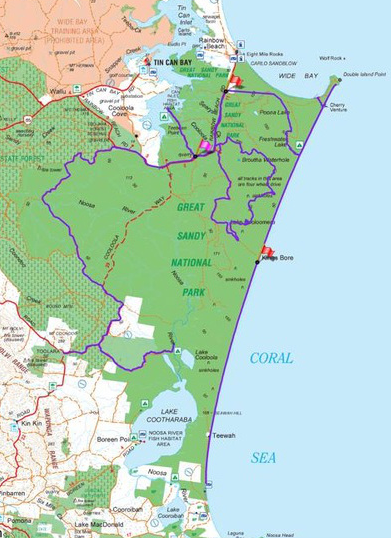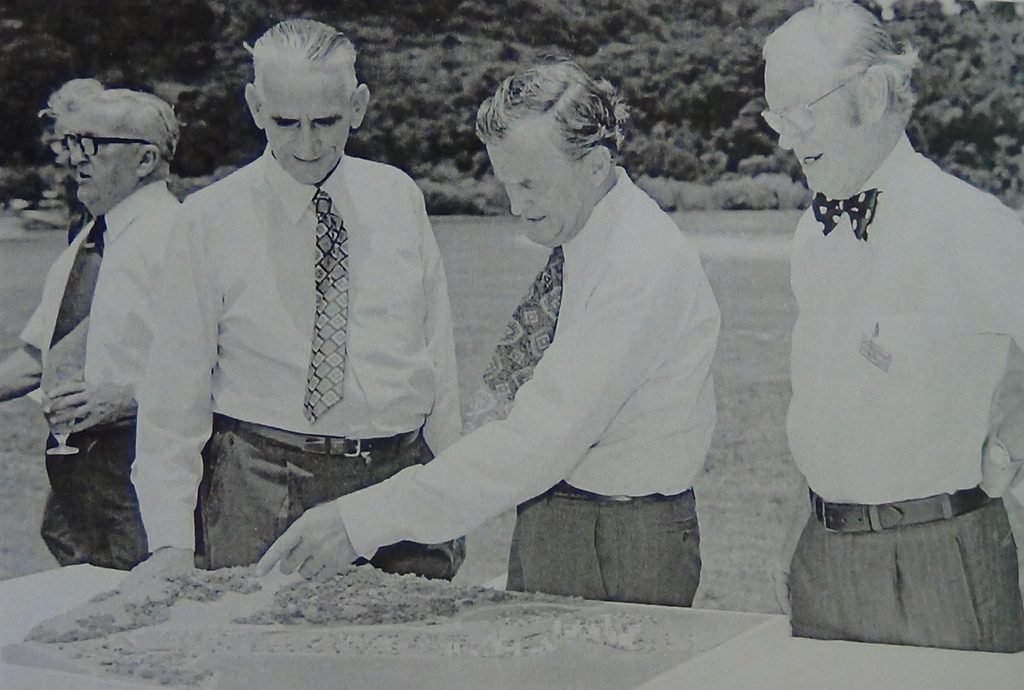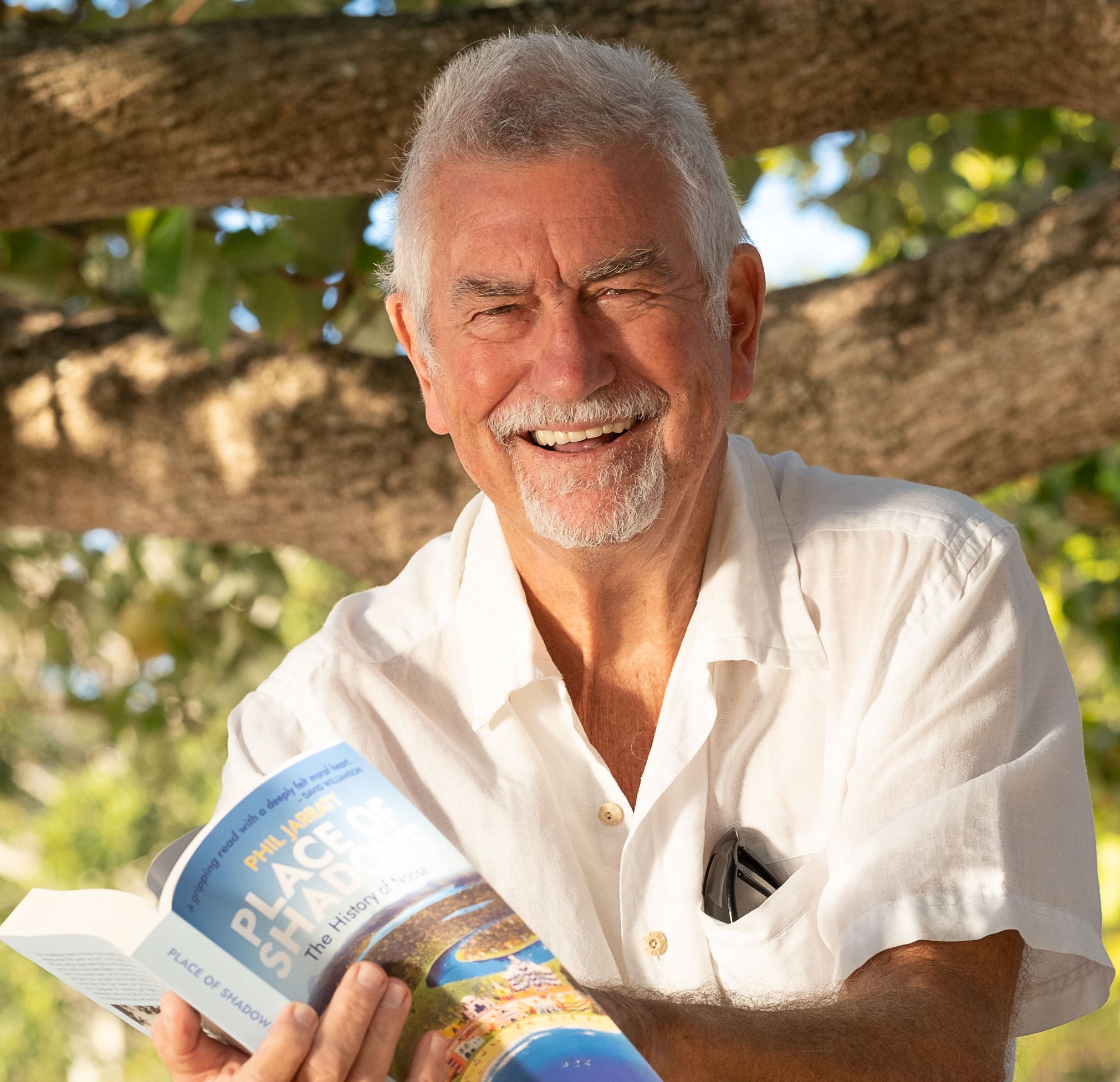When rain falls on the Cooloola Sand Mass, the blessed water freshens the foliage of the forest trees, their vines and their epiphytes, dripping through to the sandy floor or running down the bark of the tree trunks to penetrate the hot surface sand and replenish the lakes. It percolates through the fine white sand grains, communicating with deep-shafted root systems and, having arrived at the water table it filters through the peat swamps … before it slowly crosses the wildflower plains … and making its slow, esoteric entrance into its river – the one and only, the dreamy, pure, much-loved Noosa River.
Kathleen McArthur, A Living River, 1974
Few people have written more evocatively about the enchanting micro-universe of the Upper Noosa River than the wildflower painter Kathleen McArthur, but she was not the first to do so.
In the spring of 1953 the poet Judith Wright holidayed at Cooloola, and wrote eloquently of how the beauty of the wilderness took her on a spiritual journey:
The blue crane fishing in Cooloola’s twilight
At Cooloola, 1954
has fished there longer than our centuries.
He is certain heir of lake and evening,
and he will wear their colour till he dies,
But I’m a stranger, come of a conquering people.
I cannot share his calm, who watch his lake,
being unloved by all my eyes delight in,
and made uneasy, for an old murder’s sake.
I can’t read McArthur or Wright on Cooloola and the Upper Noosa without reflecting on Cooloola’s problems today, and how they are impacting on our First Nations, and on my own spiritual journey there. Nearly 30 years ago tragedy had struck our family and I needed time out to reflect and regroup. My wife dropped me at the ferry and I lit out with just a backpack, a thin swag and a light rod.
I caught my dinner in a low-tide gutter and slept between the dunes that first night, then I crossed over the Sand Patch and slid down the dune into the riverside forest.
For the next few days I was at peace in the solitude of the river. No one came. My head began to clear. I dropped down the Freshwater Track to Double Island Point, where I slept in the lee of the headland and in the morning I walked to Rainbow Beach where I phoned my wife. “I’m ready, please come and get me.”
It’s an extraordinarily powerful place, and no one understood that better than the environmental warriors who first took up the fight to save it from mining and development.
The early 1960s were still a bit like the sleepy 1950s in Menzies’ Australia. The wave of social and political revolution amongst the young that would define the decade had not yet washed onto our shores, and in Queensland the tide had recently turned the other way with the 1957 ousting of Labor after decades and the election of the Country-Liberal Party.
The new conservative state government quickly introduced the Crown Land Development Act, creating opportunities for huge development leases over large slabs of coastal land, and by 1962, with the completion of the Bruce Highway between Brisbane and Cairns, the bulldozers were busy creating link roads to new towns and resorts, and the government was counting its takings and its rapidly improving approval ratings.
But there were some who wanted the brakes applied. In 1962 the poet and the painter came together when friends McArthur and Wright joined with a publisher and a naturalist to found the Wildlife Preservation Society of Queensland in Brisbane, while later in the year in Noosa the foundation meeting of the Noosa Parks Development Association was called by Arthur and Marjorie Harrold. (The association later dropped “Development” from its title and within three months it had more than 100 members.)

The battle to save the sand mass of Cooloola began in 1963, just a few short months after the formation of the Parks Association, with the state government declaring a 16,000-acre fauna reserve stretching from the upper reaches of the Noosa River over the Cooloola Sand Patch to the ocean.
This “sacrifice” of a tiny piece of poorly-timbered country was seen by conservationists for what it was – tokenism in the face of pending lease applications for sandmining and logging operations. The Parks Association countered by calling for the creation of a national park extending from the Noosa North Shore to Fraser Island, taking in the Coloured Sands, the Cooloola high dunes, the lush rainforests, perched lakes and the Noosa Plain. This was a huge call, but this was a prized and treasured environmental asset. The battle lines were drawn.
A few months on, sandmining companies applied for two leases over 6,000 hectares of the high dunes. As environmental crusader Michael Gloster noted in his 1996 polemic, The Shaping of Noosa: “The writing was on the wall. Until the Cooloola high dunes were protected as part of a Cooloola National Park, the threat of sandmining would continue, and sooner or later was likely to be realised with disastrous environmental consequences.”
By the end of the 1960s, alongside the 300-strong Noosa Parks Association stood the Wildlife Preservation Society of Queensland, the National Parks Association of Queensland, the Australian Conservation Foundation and at least another dozen smaller conservation and community groups.
The NPA teamed with Caloundra’s Kathleen McArthur on a huge “Postcards to the Premier” campaign that resulted in more than 150,000 cards reaching the desk of new Queensland Premier Joh Bjelke-Petersen, an achievement Arthur Harrold called “a masterstroke”.

In 1970, NPA helped establish a Brisbane-based sister organisation called the Cooloola Committee, and also formed an alliance with John Sinclair and his Fraser Island Defenders Organisation. Together they put together a petition of 24,000 names in support of a Cooloola National Park, most of them drawn from marginal seats, and provoked a backbench revolt that threatened Joh’s premiership. He reversed his pro-mining stance and supported protection of the dunes.
Unlike most who had forced Joh into a corner, the NPA men remained friendly with the premier and he with them, and Joh soon claimed the park as his own idea. After its declaration in 1975, the premier and his secretary, Beryl, took the government plane to Rainbow Beach, and Bjelke-Petersen actually wept at the beauty of the dunescape he believed he had saved.
The gazetting of a 25,000 hectare Cooloola National Park was a massive symbolic victory for Queensland conservationists generally and Noosa Parks Association specifically. And the alliances formed to get this far would be game-changers of the future, but there was still much to be achieved before the sand mass could truly be considered safe.
And now, as hordes of Covid-driven tourists threaten the integrity and the safety of the beach and the dunes, the Traditional Owners talk about closing beach access as the only way they can care for country, and the future of the ferry gateway to this unique wilderness is set to be debated as the operator lease expires, we must look to a new generation of fearless agitators to ensure that the wilderness and the river survives what Kathleen McArthur called “the depredations of the market mercenaries”.
Find out how you can see the spectacular Cooloola sandpatch for yourself.

